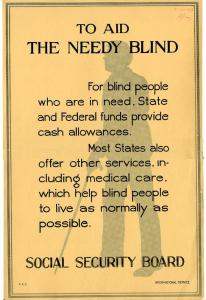
(Photo by: Eric Thayer/Reuters/Landov)
In the wake of the Sandy Hook Elementary School shooting in Newtown, Connecticut in December 2012, legislators were compelled to act in response to the great sense of loss and the idea that certain laws and regulations could have prevented such a tragedy and would be able to prevent future tragedies from occurring again (Miller, 2015). Unfortunately public tragedies are one of the few ways national attention is paid to the issue of mental illness and the mental health care disparities that plague the health care system (Leonard, 2014). As the only clinical psychologist in Congress, Rep. Tim Murphy, Ph.D. (R-Pa.) conducted several hearings after the shooting at Sandy Hook to investigate the federal government’s role in mental health services (Hongberg & Sperling, 2013). In 2013, Rep. Murphy unveiled the Helping Families with Mental Health Crisis Act, which initially received bipartisan support, but an opposing bill was brought forward that same session by Rep. Ron Barber, who filled Rep. Gabrielle Giffords’ seat after she was wounded in another public shooting incident (Miller, 2015). Eventually, both Murphy’s and Barber’s bills died with the end of the congressional session that December (Miller, 2015).
Two years after the shooting at Sandy Hook, the National Alliance on Mental Illness (NAMI, 2014) released a report that revealed how funding for mental health slowed in most states in 2014 after the initial reaction to the shooting in 2013 wore off. During the recession, states collectively cut mental health budgets by $4.35 billion, along with 3,222 psychiatric beds (Leonard, 2014). In 2014, Michigan cut $156 million for mental health and substance use services, while Rhode Island, Alaska, Louisiana, Nebraska, and North Carolina also joined the ranks of those cutting mental health funding in 2014 (NAMI, 2014). Although in recent years, Texas has increased its mental health budget exponentially, Texas was reported as ranking 49th in the country in 2010 for allocating less than $1 for every $3 per patient allocated by other states (Walters, 2014). On a national level, in 2013 and 2014 Congress failed to move on any measures relating to mental health.

Earlier this year Rep. Murphy reintroduced a revised version of the Helping Families with Mental Health Crisis Act. Murphy’s new bill includes measures that will increase treatment options for addressing mental illness, as well as integrate mental and physical health care in order to reduce barriers and stigma closely associated with mental illness (Times-Union Editorial, 2015). His bill boldly concluded with this claim: “For the first time in 50 years, real solutions have been proposed to fix America’s broken mental health system” (Times-Union Editorial, 2015).
“It’s the most comprehensive mental health bill we’ve seen in a long, long time, and that in itself is an accomplishment,” said Keris Myrick, president of the board of the NAMI, speaking of the 2013 version of the bill (Carey, 2014).
Assisted Outpatient Treatment

One of the major features of the bill include requiring states to authorize Assisted Outpatient Treatment (AOT) in order to receive community mental health service block grant funds. Over the last 20 years, 45 states have enacted laws allowing for involuntary treatment in particular circumstances, such as New York’s Kendra’s Law, which went into effect in 1999 (Carey, 2014). Researchers have found such laws have resulted in mental health patients having fewer incidences of hospitalizations and arrests, as well as a a nearly 50% reduction in Medicaid and other mental health care costs (Carey, 2014).
Despite these findings, thousands of former psychiatric patients remain highly critical of involuntary treatment programs. Opponents from the Bazelon Center for Mental Health Law and the Foundation for Excellence in Mental Health Care worry this approach will push medication rather than advocate for a more holistic approach to recovery (not cure). Dr. Nikkel of the Foundation for Excellence in Mental Health Care believes this provision will “drive people away from seeking services when they fear treatment will be forced on them or they’ll be locked up,” as well as “eviscerate civil right protections” (Carey, 2014).
Amend HIPAA Laws
Rep. Murphy’s bill will also amend HIPAA (the Health Insurance Portability and Accountability Act) which offers federal protection for privacy regarding medical information (Times-Union Editorial, 2015). Currently, HIPAA protects the medical privacy of all adults, which has created difficulties when parents or caregivers of adults should be integrated into treatment decisions (Carey, 2014). The amendments will allow parents or caregivers the ability to access patient medical information without the patient’s consent if the medical information pertained to the patient’s safety and welfare (Miller, 2015). Opponents to this measure fear the disparity in confidentiality for patients with mental illnesses could further stigmatize and infantilize patients, as well as place additional strain in patient-doctor and patient-family relationships (Miller, 2015).
Substance Abuse and Mental Health Services Administration (SAMHSA)
SAMHSA is the only federal agency responsible for funding that supports direct mental health care, an agency that many critics believe is in need of long overdue overhaul (Lieberman, 2015). In this bill, SAMHSA will be largely scaled back and required to promote evidenced-based practices (Carey, 2014). Noting SAMSHA’s annual budget of $3.6 billion dollars, Rep. Murphy said, “When something has been funded for a long time, it’s tough to let it go… What we’re saying is that if a program works, then show us the evidence that it does, and we’ll keep it. If the evidence is not there, then the taxpayers shouldn’t pay for it.”

Veterans Court Program
Veterans Court Programs began in 2008 as an alternative process for veterans arrested for crimes related to mental illnesses, substance abuse, cognitive impairments (such as traumatic brain injuries), and combat-related mental illnesses (Justice for Vets, 2015). That 1 in 6 veterans who served in Operation Enduring Freedom and Operation Iraqi Freedom are suffering from substance abuse disorder and an average of 22 military veterans commit suicide every day point to the mental health crisis impacting America’s veterans who are in need of substantial support and avenues for recovery (Justice for Vets, 2015). Currently there are 130 special courts across 40 states with jurisdiction over the veteran population in their areas (Hennenberger, 2013). Modeled after drug courts, veterans court programs offer specific treatments rather than incarceration, in addition to serving as a “one-stop shop” for connecting veterans to benefits, programs, and services (Justice for Vets, 2015). Rep. Murphy’s bill calls for expanding veteran court programs, as well as extending the Mentally Ill Offender Treatment and Crime Reduction Act (MIOTCRA), which allows for mental health courts, crises intervention teams, and diversion programs to support individuals with mental illness, rather than punishment through incarceration (Murphy, 2013).
Additional provisions
The lengthy bill contains several provisions aimed at improving access to and integration of mental health care, including:
- Enacting the Excellence in Mental Health Act in order to improve community mental health services and integrated mental health and primary care treatment
- Improving access to psychiatric medication through Medicaid and Medicare
- Medicaid reimbursement expansion for inpatient psychiatric treatment
- Reauthorization of the Garrett Lee Smith Suicide Prevention Act to provide federally funded resources for suicide prevention and postvention
- The creation of federal interagency Council on Serious Mental Illness to provide federal coordination of mental health services
- Support research on early detection of serious mental illness in youth through the National Institution on Mental Health, and
- Expansion of the Health Information Technology (HIT) resources for mental health service providers (Hongberg & Sperling, 2013)
The last legislation to substantially impact the mental health care system in the nation was the Community Mental Health Act, signed in 1963, which called for the end of institutionalization in order to individuals with mental illnesses to receive care in the community (Leonard, 2015). Dr. E. Fuller Torrey, executive director of the Stanley Medical Research Institute and founder of the Treatment Advocacy Center, spoke about this movement in the 1960s and said, “They were good ideas, just not carried out very well. All we did was empty the hospitals” (Leonard, 2015).
While the Treatment Advocacy Center, NAMI, and the American Psychological Association (APA) have voiced support for H.R. 3717, especially considering the long overdue need for reforms and policy changes, groups like the Bazelon Center for Mental Health Law, the Foundation for Excellence in Mental Health Care, and the National Disability Rights Network remain concerned whether the law is in the best interest of the individuals with mental illness or in the best interest of professionals who serve them (Leonard, 2015).
Yet, an investigation done by the House Energy and Commerce Committee found that on average there is a delay of 110 weeks between an individual’s first episode of psychosis and the provision of treatment. Dr. Paul Summergrad, president of the APA, expressed concerns over seeing patients waiting for medical beds on a daily basis, and he lamented, “We would not tolerate this for any other medical condition” (Leonard, 2015).
References:
Carey, B. (2014 April 2). Mental health groups split on bill to overhaul care. NYTimes.com. Retrieved from: http://www.nytimes.com/2014/04/03/health/mental-health-groups-split-on-bill-to-revamp-care.html?_r=0
Demoss, D. (2015 January 5). Reasons to support the mental health crisis act. HuffingtonPost.com. Retrieved from: http://www.huffingtonpost.com/dustin-demoss/reasons-to-support-the-me_b_6353994.html
Hennenberger, M. (2013 December 2). Veterans court program helps warriors battle addiction, mental health crisis. WashingtonPost.com. Retrieved from: http://www.washingtonpost.com/politics/veterans-court-program-helps-warriors-battle-addiction-mental-health-crises/2013/12/02/d44cf352-5b6c-11e3-bf7e-f567ee61ae21_story.html
Hongberg, R. & Sperling, A. (2013). Mental health legislation in Congress. National Alliance on Mental Illness. [Letter]. Retrieved from: http://www2.nami.org/Content/Microsites275/NAMI_Greater_Orlando/Home263/Welcome_to_NAMIGO!1/NAMI_National_Email_MurphyMemoFinal.pdf
Justice for Vets. (2015). What is a veterans treatment court? Retrieved from: http://justiceforvets.org/what-is-a-veterans-treatment-court
Leonard, K. (2014, December 9). Two years after Sandy Hook: Mental health funding still lags. USNews.com. Retrieved from: http://www.usnews.com/news/articles/2014/12/09/two-years-after-sandy-hook-mental-health-funding-still-lags
Leonard, K. (2015 January 27). Mental health advocates rally behind new bill. USNews.com. Retrieved from: http://www.usnews.com/news/articles/2015/01/27/mental-health-advocates-rally-behind-new-bill
Lieberman, J. A. (2015 February 25). Second change for mental health crisis act. Medscape.com. Retrieved from: http://www.medscape.com/viewarticle/839716
Miller, D. (2015 February 4). Should APA have endorsed the Helping Families in Mental Health Crisis Act? PM360. Retrieved from: http://www.pm360online.com/should-apa-have-endorsed-the-helping-families-in-mental-health-crisis-act/
Murphy, T. (2013). Detailed summary of the Helping Families in Mental Health Crisis Act (H.R. 3717). U.S. House of Representatives. Retrieved from: http://murphy.house.gov/uploads/Section%20By%20Section%20Detailed%20Summary%20of%20HR3717.pdf
National Alliance on Mental Illness. (2014). State legislation report 2014: Trends, themes, & best practices in state mental health legislation. Retrieved from: http://www2.nami.org/Template.cfm?Section=Policy_Reports&Template=/ContentManagement/ContentDisplay.cfm&ContentID=172851
Times-Union Editorial. (2015 April 21). Congress begins to tackle mental illness. Jacksonville.com Retrieved from: http://jacksonville.com/opinion/editorials/2015-04-21/story/congress-begins-tackle-mentall-illness#.VTbf7mbat4I.twitter
Walters, E. (2014). New year brings cautious hope for mental health care. The Texas Tribune. Retrieved from: http://www.texastribune.org/2014/01/02/mental-health-care-new-year-brings-cautious-hope/






























